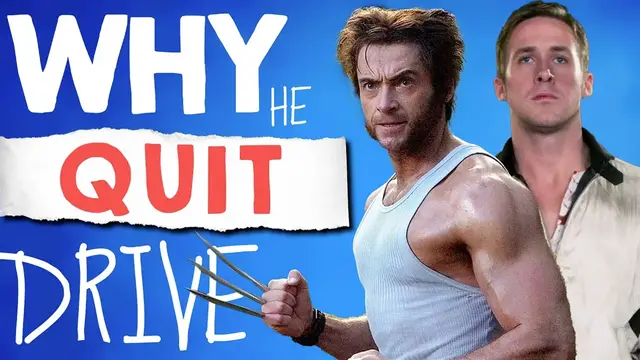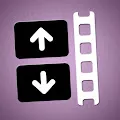Hugh Jackman, most known for his role as Wolverine in the X-Men franchise, was once cast as the lead of the movie Drive. Though during a tough pre-production process, the film changed directors and Hugh Jackman decided that he and auteur director Nicolas Winding Refn weren't the right fit. The film would later go on to cast Ryan Gosling in the iconic role, but how different would Drive have been with Hugh Jackman behind the wheel?
Show More Show Less View Video Transcript
0:00
Movies are a rare type of art that often finds itself
0:02
dependent on circumstance. Traditional visual art, novels, comic books, and music can all take years or even decades
0:10
to gestate until its final form. While movies can take just as long
0:14
they often just click into place when the right creators appear. When that core team changes, it can snowball
0:20
and completely alter the trajectory of a film. For Drive, that small change was Hugh Jackman's departure
0:26
and Ryan Gosling stepping into the role. While it was released in 2011, Drive was initially announced back in 2008
0:33
based on the 2005 book of the same name by author James Salas. Salas had come up in the 60s writing weird science fiction
0:40
When he pivoted to the crime genre, a lot of his material maintained the avant-garde style of his earlier stories
0:46
That leaning on a style more in line with the French New Wave than traditional noir is all over Salas' Drive
0:53
which is exactly what drew the initial creative team of director Neil Marshall, star Hugh Jackman
0:58
and writer Hossein Ameni to the project. At this point, Jackman had already reached A-list star status
1:03
as Wolverine in several different X-Men movies. While he had some success outside of the three-clawed mutant
1:09
it was rather a hit or miss. With Drive, it was clear that Jackman had a clear idea of what the story was
1:15
a classic car chase film led by a criminal with a heart that the audience felt comfortable cheering for
1:20
While the details are a little fuzzy on whether it was the star or director
1:24
who was brought on first, we do know that it was initially a very different film than what we ended up with
1:30
It's the inside that counts, not the outside, right, Shannon? You are correct, sir
1:34
Marshall had stormed onto the indie horror scene with his debut Werewolves vs. Soldiers film
1:39
Dog Soldiers. He quickly followed it with the even more beloved The Descent
1:43
a story about grief told through cave divers and subterranean mutants. And these are both incredible low-budget cult movies
1:50
Dog Soldiers breathed life into a smash popularized in 80s mass market paperbacks and The Descent was genuinely a compelling look at grief friendship and the terror that wraps
1:59
around those ideas. But their appeal is more visceral. Marshall is a filmmaker who doesn't
2:04
seem to want to challenge audiences as much as appeal to their base desires. The success of his
2:09
first two films gave him carte blanche to make a large budget feature, Doomsday, which Marshall
2:14
used to mine nostalgia for films like Mad Max and Escape from New York. While the movie was
2:19
considered a failure, it's hard to deny its charm and earnest love of genre, which honestly made him
2:24
a sort of perfect fit to work with Hugh Jackman. It's not too hard to imagine what a film with the
2:29
same plot would look like with Jackman and Marshall behind the wheel. The plot of Drive
2:33
is essentially a noir movie about a stuntman by day who works as a getaway driver by night
2:38
When the titular driver is double-crossed, he goes on a revenge spree for the latter half of
2:43
the movie. Just saying the bare-bones story, it's easy to see Jackman's determined glare behind the
2:47
wheel as he bobs and weaves through each of Marshall's set pieces. We had seen the director
2:52
helm a chase before in his previous directorial effort, and it was clear he loved the high-octane
2:58
adrenaline of it all. But the fact this version of the film never came to be gave us something
3:02
impossible to imagine or predict. The details get a little blurry around how exactly each creator
3:07
fell off. Disputes about timeline, the fact Marshall's large-budget doomsday flopped, or just simply Marshall leaving to direct Game of Thrones, what we do know is that producer Mark
3:17
Platt reached out to rising star Ryan Gosling. Gosling had begun his career as a child actor
3:22
working on the television series The Mickey Mouse Club. There's probably a parallel universe where
3:27
he pivots that childhood success into a straight entertainer career akin to Jackman. Instead
3:32
in the early 2000s, Gosling seemed to make a conscious decision to couple his success
3:36
with stranger arthouse movies. By the time he was offered Drive, he had already acted in a
3:41
myriad of films that engaged the audience and demanded their participation not just their enjoyment Films like The Believer about a Jewish boy who becomes a radicalized anti or Lars and the Real Girl a movie about a lonely weirdo who forms a serious romantic relationship with a life human doll Gosling seemed dead set
3:59
on proving he was more than a pop actor, and it seemed to be working. The movies he chose were
4:04
generally well-received with Gosling's performance singled out as excellent. So much so, a caveat of
4:10
him taking the role of driver was he got to choose the film's new director, which brings us to
4:15
Nicholas Winding Refn. Refn had made a name for himself directing what could be called art house
4:20
action movies. Hailing from Denmark, he had directed the Danish crime movies, the Pusher trilogy
4:25
Bronson with Tom Hardy, and Valhalla Rising with Mads Mikkelsen. Each of these movies took familiar
4:30
tropes, a crime story, a wild prisoner, or a Viking epic, but approached them in an offbeat way
4:36
The films have a surreal feeling, an idea that Refn isn't trying to tell you a coherent story
4:41
as much as he's insisting you feel somewhat changed by the time the credits roll
4:45
Maybe it's relishing in the quiet moments of Aftermath after a scene of brutality
4:50
or it could be the way the violence is framed with the focal point on a reaction
4:54
These movies are what attracted Gosling to Refn in the first place. Having loved Valhalla Rising, he wanted to meet the director
5:01
Refn said in an interview with Complex, So through our meeting, I had this big catharsis that led to me seeing the movie as the story of a man and a car
5:09
A guy who drives the car listening to pop music, and the pop music is his only kind of emotional release
5:15
But the two had a feeling of what the script could be. A shared idea to take a traditional, violent story and not just thrill the audience, but make them question why they were thrilled to begin with
5:25
This isn't a new idea. Even marrying the idea with a more pop-centric genre, like action, goes back decades
5:31
Akira Kurosawa's Seven Samurai is often cited as one of the foremost art house action films, and it was released in 1954
5:39
Throughout the decades films in a similar vein popped up to critical success Point Blank directed by John Borman was released in 1967 and Bullet the following year in 68
5:49
And there seemed to be a renaissance in the 90s. Movies like Luc Besson's The Professional in 94
5:54
Run Lola Run in 98 by Tom Tyquor, and Ghost Dog by Jim Jarmusch in 99
5:59
An article with Young Hollywood recalls Gosling saying, I have to take him home and we're in the car and it's awful
6:05
We're not talking, so I turn on the radio, and suddenly he comes to life and starts crying and singing at the top of his lungs
6:11
He says, this is it. It's a movie about a guy who drives around listening to music
6:15
It's what I was feeling, so I knew we were onto something. There is nothing wrong with the hypothetical drive that Jackman and Marshall spoke of
6:22
From all their excitement, it sounds like it would have been a crowd-pleasing car chase movie
6:26
with big action and a pulp noir backbone akin to Quentin Tarantino's criminally underrated Death Proof
6:32
But the version of Drive that Refn and Gosling gave to us is truly, profoundly weird
6:38
While Marshall and Jackman seem to revel in their workman attitude to showmanship
6:42
neither Refn or Gosling seem to care if the story they created was enjoyed or even understood
6:47
because they enjoyed it and they understood it. While it's said there were a copious amount of screenplays for Drive
6:52
Refn and Gosling morphed it through their experiences and lens. And this is something that happens all the time in storytelling
6:58
When you watch the documentary Joe Doroski's Dune, it was clear the filmmaker was approaching
7:03
the story vastly different from the films we got from David Lynch or Denis Villeneuve
7:07
People's art is always filtered through their own lives, their own wants
7:11
Be it films, music, or books, is often at its best when it stems from the heart
7:16
It comes from a deep place of desire, of wanting to see something exist in the world that you
7:21
are just not finding. The whole process can feel like a phantom limb, an absence that you know should be there but
7:27
seems lacking. But when you find a creative partner who feels the same way, it truly is magical
7:32
It's a way to complete yourself, and in the case of Drive, we were all better off bearing witness to the story Refn and Gosling gave us
#Celebrities & Entertainment News
#Entertainment Industry
#Movies



